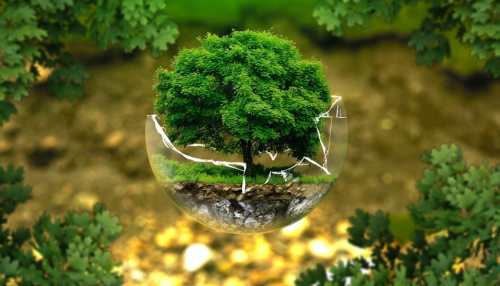- News>
- Culture
World Environment Day 2023: Date, History, Theme And Significance - All You Need To Know

World Environment Day: Every year, World Environment Day is celebrated on June 5. The day draws attention to different aspects of environmental concern each year. This year, the focus is on combating plastic pollution.
Highlights
- World Environment Day gives people from all walks of life an opportunity to take concrete steps to protect the environment
- Plastic pollution chokes marine wildlife, damages soil and poisons groundwater, and can cause serious health impacts
- According to United Nations Environment Programme, humans produce more than 430 million tonnes of plastic per year
Every year on June 5, World Environment Day is observed and as the name suggests, the day encourages awareness and action for the protection of the environment. Today, the world is facing many environmental concerns, several of them grave, and they require urgent addressing. Every year, a different theme is chosen for World Environment Day to draw attention to a different aspect of environmental concern. This year, the focus is on beating plastic pollution.
World Environment Day 2023: History And Significance
Following the discussions on the integration of human interactions and the environment, World Environment Day was established in 1972 by the United Nations at the Stockholm Conference on the Human Environment. At the conference, it was discussed how international measures to address alarming environmental issues can be introduced. It was in 1974 that this day was celebrated for the first time.
Some of the major environmental challenges the world is facing today include climate change, deforestation, pollution (including plastic pollution), biodiversity loss, and sustainable development. The significance of World Environment Day lies in the fact that it gives people from all walks of life - be it governments, businesses, non-governmental organizations, or the general public - an opportunity to take concrete steps to protect the environment. People are encouraged to live more sustainably by reducing waste, conserving energy, implementing eco-friendly practices, and supporting environmental causes. This is also a global forum where policy debates take place, knowledge is shared sharing, and initiatives for environmental issues are discussed and their implementation processes charted.
Also Read: World Environment Day - 10 Alternatives To Everyday Plastic Items
World Environment Day 2023: Theme
The 15th World Environment Day will once again focus on the plastic pollution crisis. From clothes, and packaging to beauty products and kitchen essentials, plastic pervades our everyday life, thanks to its affordability, durability, and flexibility. As United Nations Environment Programme (UNEP) points out, plastic pollution chokes marine wildlife, damages soil and poisons groundwater, and can cause serious health impacts. According to the UNEP, humans produce more than 430 million tonnes of plastic per year. Two-thirds of these are short-lived products that soon become waste, filling the ocean and, often, working their way into the human food chain. On their website, Llorenç Milà i Canals, Head of the United Nations Environment Programme’s (UNEP’s) Life Cycle Initiative, is quoted as saying: "Many people aren’t aware that a material that is embedded in our daily life can have significant impacts not just on wildlife, but on the climate and on human health."
